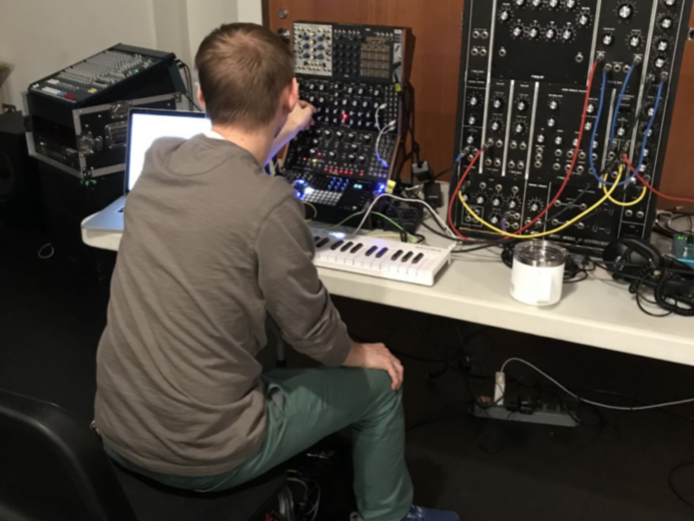The Machine as a Mind

While machine learning and artificial intelligence are often described in terms of science fiction narratives, they are not exotic or futuristic. These technologies are used to plan cities, adjust photos, schedule flights, trade stocks, and more. Artists and scientists and innovators need to understand the tools that they use, not as they are imagined to be, but in the ways that they actually inhabit our shared world. We are interested in new ways to understand the world around us, transforming data into experience, pushing at the boundaries of authorship, and exploring the ethics of gathering and interpreting fragments from our mediated lives
Example Projects:
I am Alan Turing
I AM ALAN TURING is an opera composed by Professor Matthew Suttor in collaboration with an interdisciplinary team of designers and developers that seeks to shine new light on the space of contact between human and machine. How do we interact with technology and to what end? How does technology interact with us? Using Artificial Intelligence (AI) software trained on everything Turing ever wrote or read, the opera is a real-time turing test that helps us rethink our relationship to technology in the twenty-first century.
Collaborators:
-
Matthew Suttor, Professor of Practice of Sound Design, David Geffen School of Drama
-
Dakota Stipp, MFA Sound Design, David Geffen of Drama
-
Liam Bellman-Sharpe, MFA Sound Design, David Geffen of Drama
-
Julia Schäfer, Graphic Designer
-
Emily Reilly, Dramaturg
-
Wladimiro A. Woyno R., Visual Designer
-
Douglas Duhaime, Digital Humanities Developer, Yale Digital Humanities Laboratory
-
Hugh Farell, Dramaturg
-
Tyler Kieffer, Sound Designer,
-
Solo Fadiran, Actor
-
Farid Abdul, Technology Support Assistant, Blended Reality Laboratory
-
GPT-2, Artificial Intelligence, OpenAI
Links:
Read more about the project
I Am Alan Turing
The Probabilistic Room
Sangji Han (SOA ’22) created an installation piece called The Probabilistic Room. Visitors used virtual reality to walk through living room environments generated by a machine learning algorithm that visualized the latent space in a large number of conventional interior designs. What they experienced were the features and the artifacts that most living rooms share, removed from the functional needs of a physically built space. Visitors experimented, danced, and played within the installation, an unexpected result that gave Sangji new insights into our relationship with architectural archetypes and the built environment.
Collaborators:
-
Sangji Han (SOA ’22)